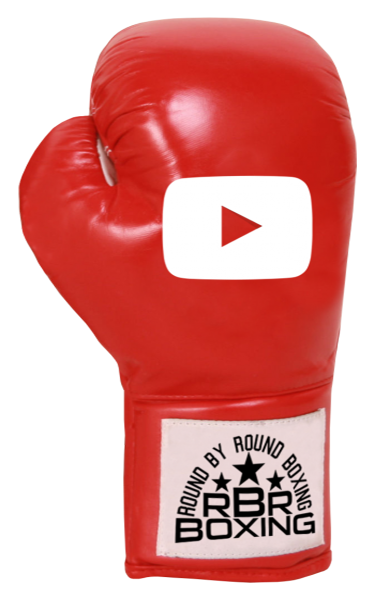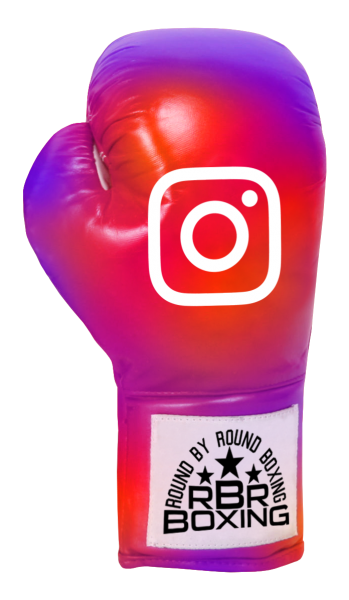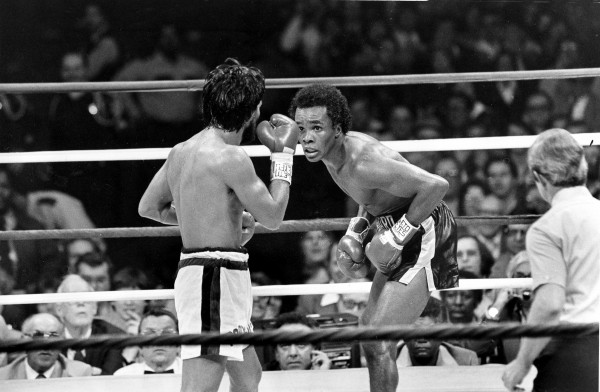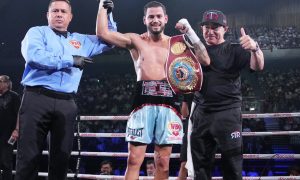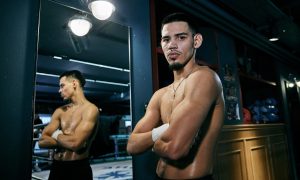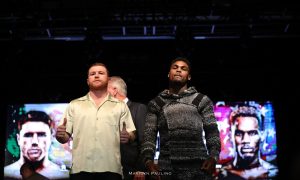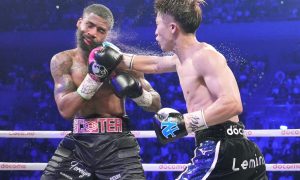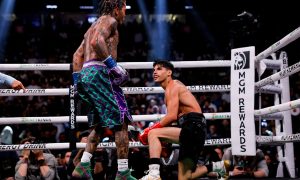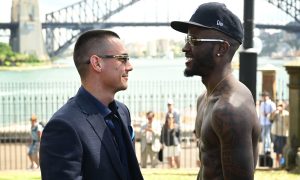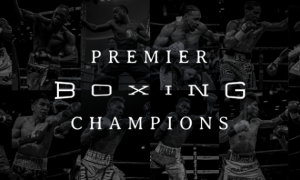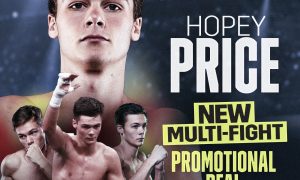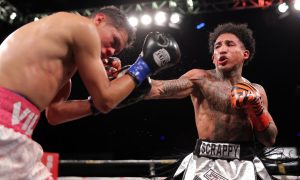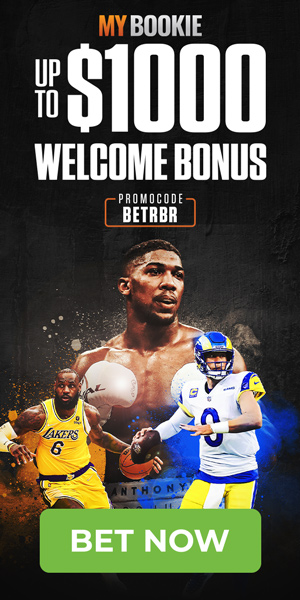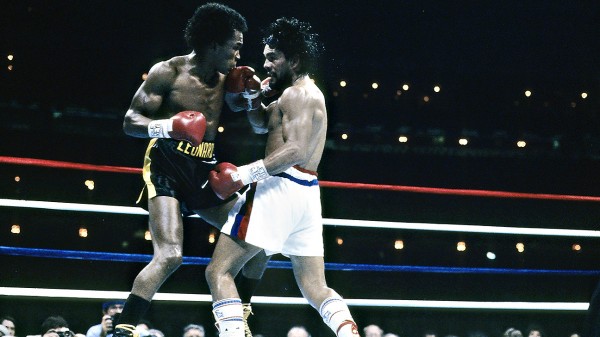 Photo by Getty Images/Focus on Sports
Photo by Getty Images/Focus on Sports
The world was still buzzing after the United States men’s hockey team had done the impossible, stunning the Soviets in the “Miracle on Ice” with a 4-3 win in Lake Placid, New York.
Transition and change seemingly ruled the day.
Mount St. Helens erupted in May, while Iran continued to hold 52 American citizens and diplomats hostage. As the world watched, President Jimmy Carter prepared to face Ronald Reagan at the polls in the fall.
The year was 1980.
The boxing scene was also a hotbed of action. Heavyweight champion Larry Holmes was set to face former champion Muhammad Ali in October and Marvin Hagler was prepared to try and win his first title from Alan Minter in September.
A new face was on the scene, a face that captivated even the fringe boxing fan. Recognizable to most households after his splendid performance in the 1976 Olympic games, he was largely adored and loved after making it to the gold medal round. His name was Ray Charles Leonard.
Born in Rocky Mount, North Carolina, Leonard was named after his mother’s favorite singer Ray Charles. Leonard won the gold in Montreal and, along the way, picked up the nickname “Sugar.”
Many regard the 1976 Olympic boxing team as one of the greatest in history. It included Leonard, Michael and Leon Spinks, Howard Davis and John Tate.
Leonard won his first championship, the WBC Welterweight title, stopping Wilfred Benitez in the 15th Round. He then earned a fourth-round knockout victory over Dave Green in his first title defense.
While Leonard continued winning, reeling off 27 consecutive victories, a dangerous veteran opponent was knocking at the door.
Born in El Chorrillo, Panama, Roberto Duran had made his professional debut in February of 1968 at just 16 years old. Nicknamed “Hands of Stone,” Duran possessed awesome knockout power and had only one loss in his 72 fight career.
That unanimous decision loss, in November of 1972 to Estaban De Jesus, would be avenged just 15 months later in an 11th round TKO stoppage.
On June 20, 1980, Leonard and Duran would meet in the city where Leonard had won a gold medal just four years prior. Over 46,000 fans packed the Olympic Stadium to see Leonard, a 9-5 betting favorite, defend his crown against Duran.
Later dubbed “The Brawl in Montreal,” Duran would win the title and deal Leonard his first defeat via a 15-round unanimous decision.
Trainer Angelo Dundee had begged Leonard to box and to move side to side to avoid Duran’s power. Instead, Leonard decided to stand flat-footed and battle Duran in a head to head, toe-to-toe confrontation. That decision proved to be fatal as, tactically, Leonard fought Duran’s fight.
After the defeat, Dundee commented on his fighter’s first loss. “You never fight to a guy’s strength. You try to offset it, and Ray didn’t. He tried to out-strong the guy. Duran was being Duran, and Ray was going with him.”
Leonard wanted an immediate rematch although some in his camp strongly advised against it. Rumors swirled that Duran partied hard after his win over Leonard.
Years later in an interview done for “Beyond the Glory,” Leonard confided, “My intention was to fight Duran ASAP because I knew Duran’s habits. I knew he would indulge himself, he’d gain 40 to 50 pounds and then sweat it off to make 147.”
Some speculation was that Duran was well over 180 pounds before going into training to face Leonard in the rematch.
On Tuesday, November 25, just three weeks after Reagan was elected the 40th President of the United States, Leonard and Duran would meet again. Over 25,000 fans poured into the Superdome in New Orleans to witness their second encounter.
Dubbed “The Super Fight,” vendors were selling fight programs that were embossed with “Stone vs. Sugar.” The fight would be broadcast on closed-circuit television and later rebroadcast by ABC. Howard Cosell would call the blow-by-blow action for the millions watching.
The 24-year-old Leonard (27-1, 18 KOs) made his way to the ring first. Led by the legendary Dundee, Leonard was decked in a black robe and black trunks with yellow trim. Installed as a 6-5 betting favorite, Leonard looked extraordinarily confident.
While only halfway to the ring, the 29-year-old Duran (72-1, 56 KOs) began his walk from the dressing room area. Led by iconic trainers Freddie Brown and Ray Arcel, Duran wore a white robe and trunks trimmed with red and blue. He too looked supremely confident.
With both fighters now in the ring, Ray Charles sang perhaps the most beautiful rendition of “America the Beautiful.” When finished, he gave a smiling Leonard a hug and a kiss on the cheek. A moved Cosell remarked on the moment, “If that rendition didn’t touch you, didn’t move you, didn’t cause a chill along your spine, I don’t suppose anything could.”
Referee Octavio Meyran then provided instructions at mid ring. The lights in the Superdome dimmed as the only remaining glow was now in and around the ring. With the backdrop of the arena now completely dark, the only remaining light illuminated inside the ring and on those fans seated directly at ringside.
The bell sounded to begin the first round. Duran was immediately the aggressor as he pressed Leonard from the outset. Leonard moved, boxed and circled. He showed no early signs of standing flat-footed and slugging with the slugger.
The second round was highlighted by a sweeping right hand by Leonard that brought the crowd to its feet. Duran took it directly on the chin and then charged at Leonard like a bull. Cosell screamed over the roar of the crowd, “A good right by Leonard! A good right! Stunned Duran! Duran in a fury going after Leonard!”
The third round was much like the first six minutes with Duran coldly stalking Leonard. The challenger was using his legs beautifully, circling, firing sizzling combinations and then moving again. Another furious exchange punctuated the end of the round that again left Cosell screaming, “Leonard is openly smiling at Duran and Duran is furious!”
After 12 minutes of frantic action, both fighters listened intently in their corners. Leonard’s hand and foot speed were the difference thus far as Dundee asked Leonard for more of the same, “Keep up the pace! Keep up the pace!” Duran’s corner pleaded, “Be the boss! Keep him on the ropes!”
Rounds 6 and 7 saw Leonard begin to secure tactical command of the fight. Duran, his face as cold as an assassin’s, stalked Leonard but struggled in keeping up with his superior hand and foot speed.
For Duran, everything began to completely unravel midway through the seventh. Leonard continued to double and triple his jab to the head and to the body. Halfway through the round, Leonard put his hands at his side, shuffled his feet and openly goaded Duran.
He motioned with his hands for Duran to come forward while talking to the champion. He then wound up his right hand and snapped Duran’s head back with a straight left hand. Cosell screamed, “He’s taunting Duran! He caught him with the left! And he’s got Duran not only furious but puzzled! Duran troubled by the movement!”
As the round ended, the crowd inside the Superdome was on its feet and in a frenzy. Cosell cried, “What a fight!”
As the eighth round began, Leonard pumped his left jab at Duran. The champion now seemed listless, still coming forward but without the same vigor and tenacity. As Duran tried to charge in, Leonard countered with crisp hooks and uppercuts catching him flush on the way in.
With 30 seconds remaining in the round, Duran turned his back and walked away from Leonard. Meyran clapped his hands together and signalled for the action to continue. Duran again shook his head while waiving his glove at the referee signalling that he did not want to continue. With his back turned, it is said that Duran then uttered the words, “No mas.”
As Leonard threw his hands in the air, Cosell erupted, “What!? Duran has quit! Roberto Duran has quit! There could be no other explanation! Pandemonium in the ring! And Roberto Duran has quit!”
The aftermath soon turned even more bizarre. Why did Duran quit? Some in the Duran camp would soon comment that their fighter was suffering from cramps. In a post-fight interview, Duran explained, “At the end of the fifth round, I got cramps in my stomach and it kept getting worse and worse.”
Leonard wasn’t buying the excuses. “I did everything I said I was going to do, and he couldn’t accept it. He was frustrated, confused. I did everything I could to make him go off, like a clock wound up too tight. He got wound up so tight, he blew a spring.”
Duran’s corner was also baffled. Brown commented, “I was shocked. There was no indication that he was in pain or getting weak.” Arcel was also unhappy. “That’s it. I’ve had it. This is terrible. I’ve handled thousands of fighters and never had anyone quit on me. I think he needs a psychiatrist more than he needs anything else.”
Cosell then conducted additional interviews for ABC Wide World of Sports. With Leonard in the studio and Duran joining remotely from Miami, Cosell explored the rumors of diuretics, a possible fix, and the rumors of cocaine use by Duran. Duran vehemently denied the rumors and repeated that cramps were the reason he quit.
Clearly, his pride destroyed, Duran was frustrated as Leonard fought arguably the best fight of his career. As brilliant as Leonard was, he and Duran will be forever linked with the words, “No mas.”



